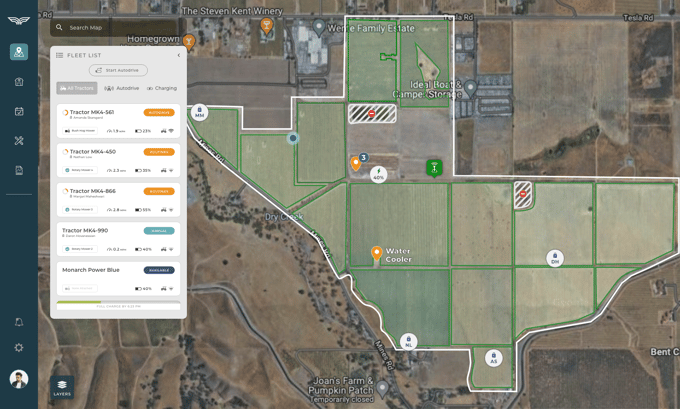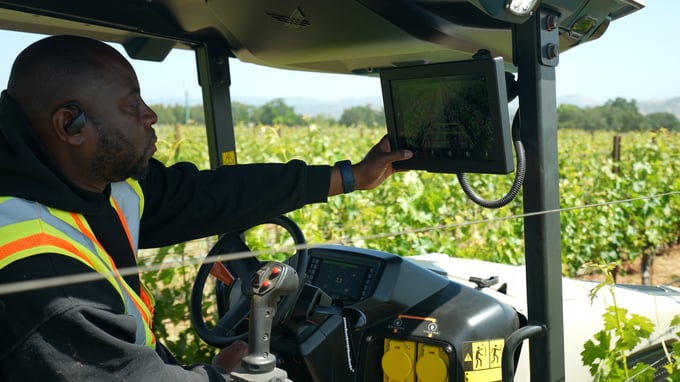Digital agriculture, a type of AgTech, uses new technologies and digital tools that enable farmers to monitor and optimize agricultural inputs, manage their value chain more effectively, and improve agricultural productivity. These technologies range from real-time data analytics, artificial intelligence (AI), and precision ag tools to automated machinery and robotics.
The history of digital agriculture can be traced back to the rise of the Internet of Things (IoT), connectivity, and big data in the late 20th century. These technological advancements introduced a new era in the agricultural sector, one that is defined by using data to drive decision-making and enhance agricultural systems.
Initially, the uptake of digital solutions in the agriculture sector was slow. Because farmers, especially small farmers, operate on tight margins and have little room for error, they tend to be risk-averse, only investing in new technologies with a clear promise on ROI. However, through strategic partnerships, government initiatives, and the work of innovative startups, the agricultural solutions offered by digital agriculture technologies have gradually become more accessible and accepted as they have proven their value and reliability.
Why Is Digital Agriculture Crucial for Modern Farmers?
In today's rapidly changing world, digital agriculture has become an essential tool for modern farmers. It impacts several key areas, from increasing farm productivity and profitability to helping improve a farm’s environmental health and viability. Safeguarding crop health, reducing herbicide applications, automating operations, and having access to detailed farm data about crops, herds, and machinery are among the many ways digital ag is employed on a farm.
Productivity & Profitability
One of the core reasons digital agriculture is vital to farming lies in its capacity to enhance agricultural productivity and allocate farm resources more efficiently and effectively. By applying artificial intelligence (AI), machine learning, and data analytics to the farming process, farmers are enabled to make timely and informed strategic decisions using real-time analytics.
Data aids the agricultural decision-making process by providing information on factors like tractor speed, fuel rate, acreage or rows covered during an operation, direction, and hydraulics, as well as agronomic factors like acreage, moisture levels, grain temperature, and spacing. The application of this data to the farming process allows farmers to manage agricultural inputs more effectively, optimize food production, and navigate challenges within the agricultural value chain. Using this input, a farmer can promptly respond to crop-related issues, equipment maintenance needs, optimal seeding and harvest times, as well as when and where to deploy tractors.
This technology-driven approach also benefits the larger ecosystem of stakeholders in the agriculture sector. From entrepreneurs who can get a more realistic snapshot of farming and market data to service providers who want to know exactly how to diagnose an equipment issue, everyone in the food value chain stands to benefit from the increased efficiency and enhanced decision-making capabilities made possible by digital agriculture.
Environmental Health & Farm Viability
Digital agriculture also plays a critical role in supporting the sustainability needs of modern agriculture. It helps farmers adapt to and mitigate the impacts of extreme weather and an unpredictable climate, like erosion from high rains and runoff and reduced yield and damage due to unseasonable and extreme temperatures. Digital ag can also play a key role in reducing or eliminating the use of many petroleum-based chemicals. Using data to nurture healthier crops and manage overall farm operations allows farms to meet consumer sustainability demands while offering potential energy savings and productivity gains in addition to lowering overall farm-level operation costs.
In the context of food security, digital agriculture ensures a more resilient food supply chain. It uses digital tools to monitor and predict potential issues, allowing for proactive measures to secure the food supply.
For instance, Monarch Tractor’s Wingspan Ag Intelligence (WingspanAI) technology helps farmers remain aware of activity across the farm in real-time, providing insight into rows completed, length of pauses (e.g., a driver taking a break), and tractor speed. With vision-based AI, WingspanAI also allows farmers to monitor crop health and address any issues. They can access historic video footage to assess plant growth progress and have a visual form of record-keeping. These capabilities add up to increase the likelihood of a healthier, robust harvest, and delivery. Dairy farmers can review live feeds of feed-pushing operations in the barns from their remote device or review operational data to quickly see how many times feed was pushed the previous night.
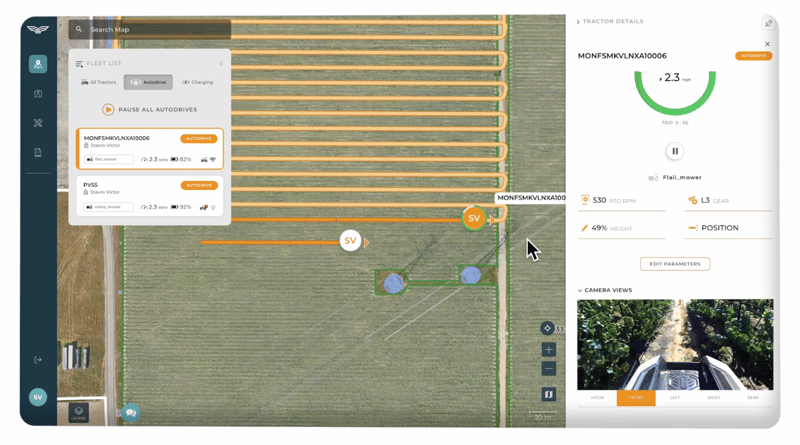
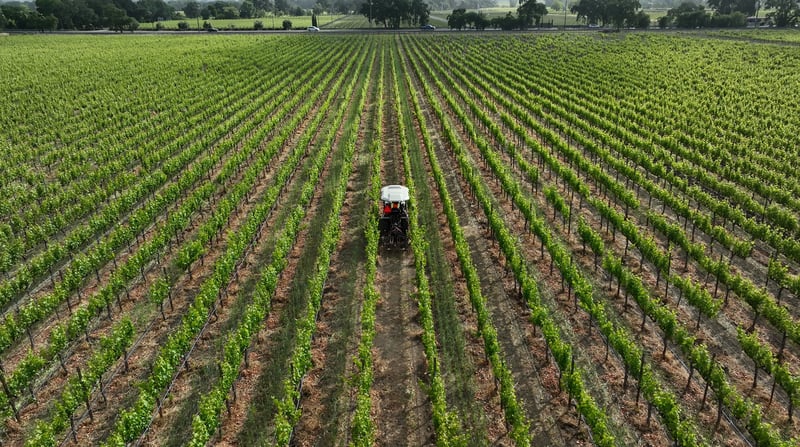
Consider an electric tractor that gives you the choice of operating autonomously or manually. Farmers can use their tractor like a conventional diesel (minus the emissions and fuel costs) or take advantage of remote monitoring of multiple tractors. This application of digital ag technology gives your current workforce the ability to get more done with fewer resources. As of 2023, Monarch Tractor's MK-V is the only tractor on the market that is electric, driver-optional, and digitally connected.
What Are the Benefits of Digital Agriculture?
There are many key advantages that farms – particularly specialty farms and dairies– can gain by incorporating digital technologies into their operations.
Increases Efficiency
One of the hallmarks of digital agriculture are the gains in efficiency that it brings to a farm and its operations. Farmers can precisely manage agricultural inputs, monitor field conditions, and optimize farming strategies by leveraging digital tools like real-time data analytics, machine learning, and GPS technology.
This targeted approach, often called precision agriculture, can significantly improve yields and overall agricultural productivity. Technologies like Monarch's autonomous tractor can reduce the burden on the operator — allowing them to manage more than one tractor, use Autodrive features so they can focus entirely on what an implement is doing, and even automate rote tasks such as mowing.
Reduces Costs and Boosts Profits
Digital agriculture can also lead to considerable cost savings. Advanced technologies like precision irrigation tools, for example, allow farmers to use water, fertilizers, and other resources with more exactitude, reducing waste and decreasing costs. In dairies, farmers can streamline their herd management, tracking health, inventory, and reproductive cycles.
How much does an autonomous tractor cost? Automated machinery often requires a higher initial investment, but its longer-term ROI makes a compelling case for the value of the up-front costs. Using the MK-V tractor as an example, a n EV tractor as a robotics and digital platform has a multitude of ways it shortens its payback period with return on investment.
In addition to savings with labor and a safer work environment, automated mowing can dramatically reduce a farm’s need for herbicides. When automation is paired with electrification, a farmer also eliminates diesel expenses from the cost of mowing. Furthermore, mowing instead of tilling contributes to healthier soils, which may lead to increased crop productivity, higher levels of organic matter, and reduced erosion.
As of 2025, Monarch is the only tractor on the market that has successfully brought a fully autonomous feature to market in the form of autonomous feed pushing for outdoor dairies, enabling dairy farmers to maintain a reliable feeding schedule. More feed can increase milk productivity. For specialty crops, Monarch's semi-autonomous feature, Row Follow, increases precision in mowing operations, reducing risk of costly collisions even for relatively inexperienced drivers. Because operators can focus entirely on the implement and let the tractor do the driving, they feel less stress and fatigued.
Engineered with connectivity, Monarch’s tractor keeps customers current with digital agriculture, even after point of purchase through its software and firmware updates. This includes Monarch® Autodrive™ and other developments.
 As such, the long-term savings and benefits will typically outweigh the initial investment expense with increased and sustained farm profitability. Because many governments at federal, state, and local levels want to encourage the adoption of beneficial technologies, there are often financial incentives in the form of tax credits, rebates, and payment vouchers. Through California’s CORE program, for instance, farmers can procure an MK-V by saving a minimum of 60% off the retail price, though the number of vouchers are limited and there are no guarantees the program will continue each year. The U.S. Department of Energy keeps an updated list of all the states and their incentive programs related to alternative fuels and advanced vehicles.
As such, the long-term savings and benefits will typically outweigh the initial investment expense with increased and sustained farm profitability. Because many governments at federal, state, and local levels want to encourage the adoption of beneficial technologies, there are often financial incentives in the form of tax credits, rebates, and payment vouchers. Through California’s CORE program, for instance, farmers can procure an MK-V by saving a minimum of 60% off the retail price, though the number of vouchers are limited and there are no guarantees the program will continue each year. The U.S. Department of Energy keeps an updated list of all the states and their incentive programs related to alternative fuels and advanced vehicles.
Enhances Decision-Making and Risk-Management
Digital agriculture equips farmers with enhanced decision-making capabilities. With access to real-time data, farmers can make informed decisions about crop rotation, pest control, irrigation, and more. Predictive analytics can help farmers anticipate and manage potential risks proactively with actionable insights that let them manage inputs, optimize labor and other resources, plan for weather cycles, and even be proactive to predicted market conditions. Collectively, these types of insights help them minimize potential losses and make their livelihoods more secure.
Eases Documentation Requirements
Digital agriculture technologies also enable better documentation of farming practices. From monitoring crop growth to recording resource usage, digital tools provide an accurate, automated, and easy way to document various aspects of farm management. This transparency can prove beneficial in several ways, from meeting regulatory requirements to sharing information with stakeholders and service providers.
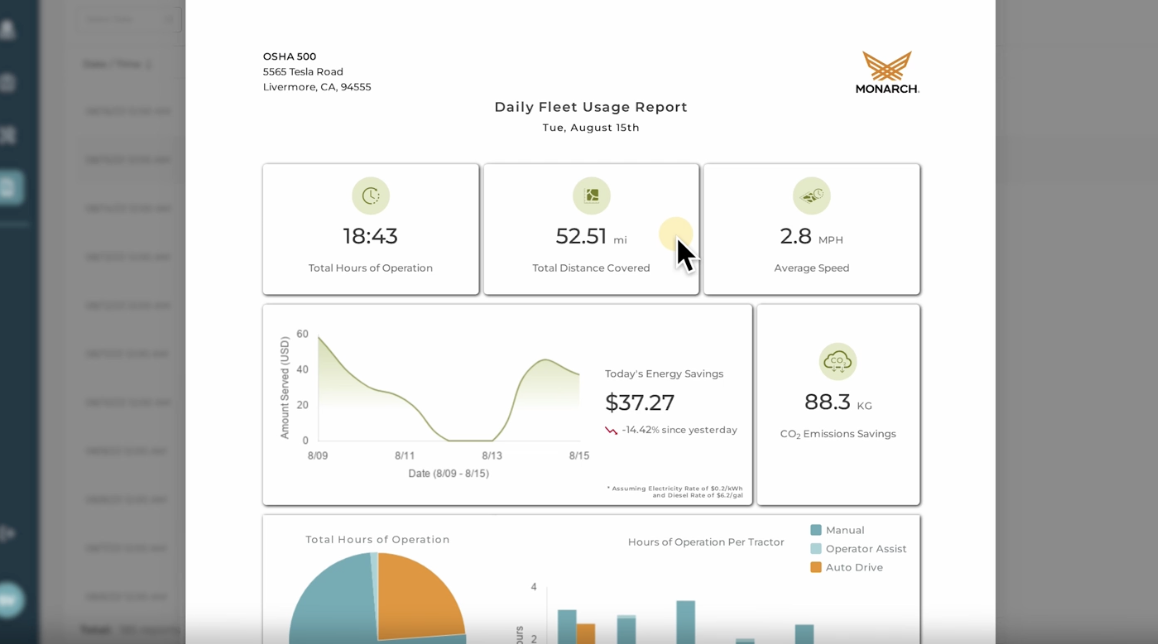
Helps Meet Consumer Demands for Sustainable Practices
As consumer demand for sustainable food systems grows, digital agriculture offers a compelling way to meet these expectations. Digital ag helps meet consumer demands while also leading to energy savings, profitability, and greater independence from reliance on external inputs — working to optimize resource use and improve farm level efficiency and operation level efficacy.
What Are the Most Popular Digital Technologies Used in Agriculture Today?
A wide array of digital technologies are currently revolutionizing the agriculture sector.
Here are some of the most popular digital technologies:
- GPS technology allows farmers to navigate their fields with remarkable precision, reducing overlap and wastage of inputs while enhancing overall productivity.
- Temperature and moisture sensors provide real-time information on field conditions, enabling farmers to optimize irrigation and other farming practices based on actual field conditions.
- Precision irrigation tools use data and connectivity to provide the right amount of water at the right time, improving water efficiency and crop health.
- Machine learning and data analytics help farmers analyze data from various sources to make informed decisions and predictions about their operations.
- Automated machinery performs tasks with precision and reduces natural human error thereby increasing productivity and making the farm environment a safer place to work.
Looking ahead to the future of digital technology on the farm, WingspanAI by Monarch Tractor is a new type of digital technology solution, turning the tractor into a multi-tasking tool that brings automated operations planning, remote fleet management, tractor performance reports, maintenance diagnostics and more to farming operations. WingspanAI is also delivered with an open ecosystem model to integrate with a farmer’s current digital ecosystem.
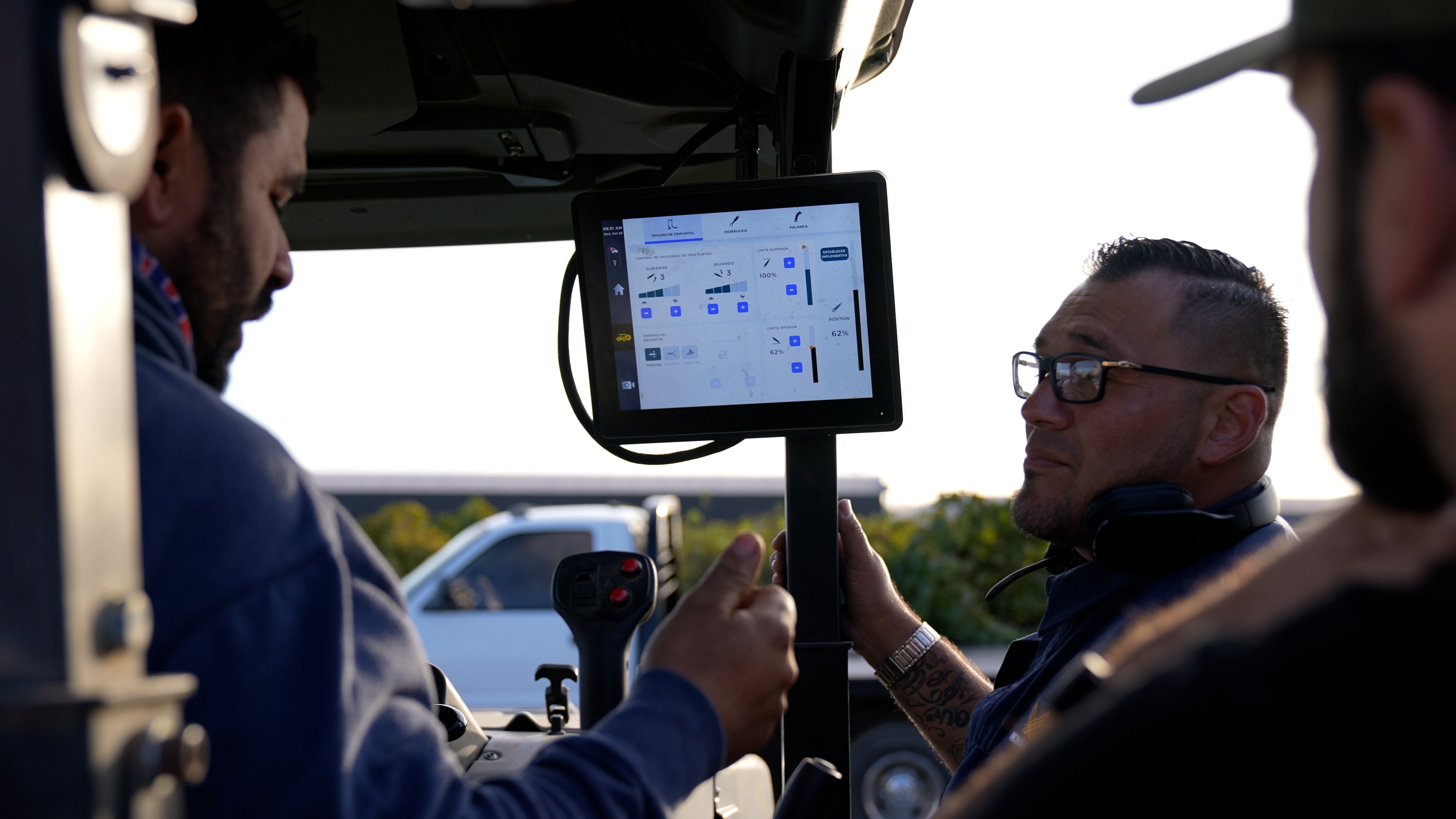
Increasing Your Yield
Digital agriculture is indeed transforming the way we farm, bringing about improvements in productivity, cost-efficiency, decision-making, and sustainability. While change can sometimes be daunting, companies like Monarch Tractor are making this transition smoother and more accessible for farmers. With innovative solutions like the electric, autonomous, and smart MK-V tractor and WingspanAI, Monarch Tractor is proving ag technology can be both advanced and familiar. In this way, we are helping to secure the future success of farming, driving us toward a more sustainable, productive, and profitable agricultural industry.
Moving forward, digital agriculture will continue to play a pivotal role in shaping the future of the agriculture sector. Its impact will be felt not just in the fields but throughout the entire food value chain, influencing everything from food production to consumption.
References
Pham, X., & Stack, M. (2018). “How Data Analytics is Transforming Agriculture.” Business Horizons, Volume 61, Issue 1, 125-133. https://agribusiness.purdue.edu/how-data-analytics-is-transforming-agriculture/


